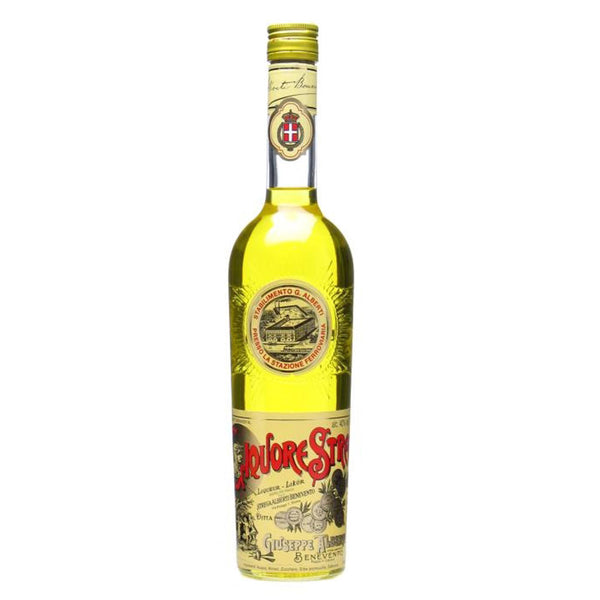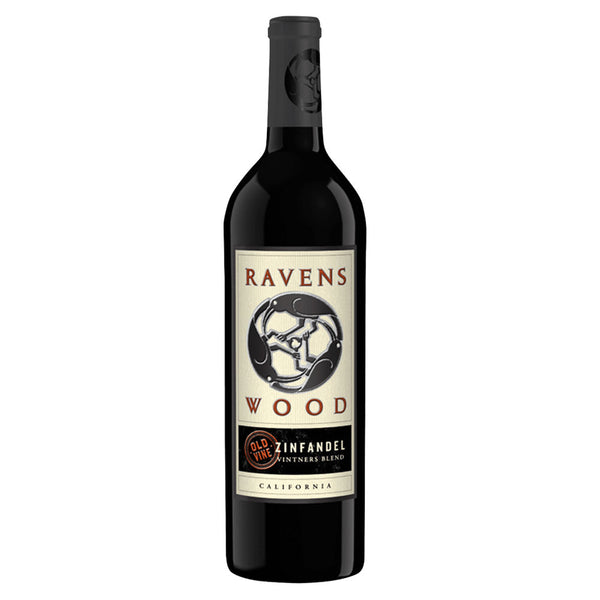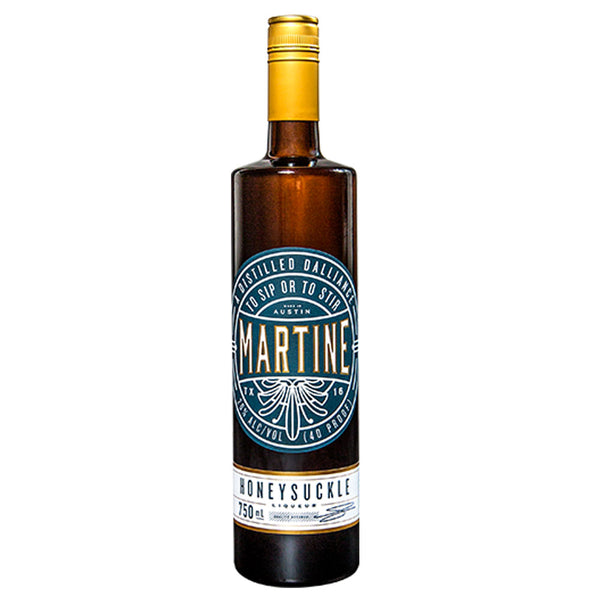
Everyone knows that witches throw the best parties…but what do you pour when witches gather? No dry-ice Halloween cocktails or gummy snakes or blood-red punch on this list. We’re interested in the real top-shelf mojo: Bottles with a witchy heritage, the patronage of a Pagan deity, or mind-bending botanicals.
Whether you’re stocking your bar for an evening Sabbat, or you’re a full-time witchy imbiber, here’s six witch-approved bottles to sample at your leisure. (No, I don’t recommend trying them all in one evening...or all in one drink.)
Taste these libations on their own, or get creative with magickal mixed beverages. Serving suggestions are given for each product. In making this list, I’ve sidestepped super-rare bottles in favor of commoner booze that should be available at larger liquor stores. Prices are what I paid for 750 ml in the DFW area in 2019.
Morrigan Irish Whiskey

The Morrigan is an Irish goddess of battle, victory, and fate. The shape-shifting deity could appear as a crow, a wolf, or a beautiful woman according to her whim. She inspired both fear and awe as a harbinger of death and as a protectress of the land.
When it was released in 2013 or so, the label on this whiskey bottle caused quite a stir in my community. The local liquor shops were probably baffled when they were overrun with Pagans who swooped in with shopping carts and left the shelf bare.
But enough about the bottle. Morrigan Irish Whiskey is produced, barrel-aged, and bottled in Ireland. Like most Irish whiskeys, it's unpeated—so it lacks the smoky flavors common to many Scotch whiskys. Instead, you get a sweeter, fruitier tipple that’s slightly grassy with notes of caramel and spice. It’s equally good mixed or sipped straight. Why not sub this fierce lady for boooooring old Jameson or Bushmills?
Price: $21.99 (for 750 ml bottle)
Serving suggestions: Drink it in an Irish coffee, on the rocks (with or without a splash of soda), or neat while gathering up the souls of the bravely departed.
Strega

I had my first sip of Strega (warm, from the bottle) during a gathering of Italian traditional witches in the piney woods of East Texas. At the time, I couldn’t imagine any libation could taste so bad. (And I was in college, so my standards were already pretty low.)
Strega is an Italian botanical liquor that boasts over 70 herbs and spices in its top-secret traditional recipe. Cinnamon, iris, pine, and mint are predominant notes—though the less charitable taster might call out mouthwash, hand soap, and cough drops. The scintillating yellow color comes from saffron, that most precious of spices. The name “Strega,” of course, means “witch” in Italian.
Strega was developed in the 1860s in Benevento, Italy. The origins of the recipe are shrouded in mystery—due, most likely, to the marketing genius of a father-and-son team of distillers, Carmine Vincenzo Alberti and Giuseppe Alberti.
The town of Benevento has folkloric connections to witchcraft dating back to the 13th century. It was supposed to have been the center of a latter-day cult of Diana, the Queen of the Witches. According to rumors, the younger Alberti once came to the aid of a witch he met in the forest, and in gratitude she provided him with the recipe for the herbal elixir. The Strega label shows a cadre of witches dancing under a walnut tree. No doubt a bottle of the liqueur would have made an excellent memento for 19th-century travelers to Benevento. It soon became the city’s signature digestif, appearing in promotional posters and souvenir cards.
Strega is golden-colored, semi-sweet, and high-alcohol with a strong minty or resinous herbal character. Like Jägermeister, it tastes like something a European grandma might keep in her medicine chest to ward off colds and malaise. Though my feelings toward Strega have mellowed since I first tried it, I don’t recommend drinking it straight. Instead, try this “witch’s liquor” in the context of a competently made craft cocktail. It can also be used to flavor traditional Italian desserts, lending a complex herbal whiff to almond cake or fruit compotes.
Price: $32.99 (for 750 ml bottle)
Serving suggestions: It’s challenging to make Strega taste good. Inspired by its legend, ambitious bartenders have resurrected Strega as a star player in witchy or Halloween-themed cocktails. (Read the feature article at Bringing It Back Bar for some ideas.)
Like its paisanos Campari and Amaro, Strega may be best in simple, aperitif-style drinks. My Italian witch friends pour it primarily as an offering to Craft ancestors, which seems as good a use as any.
Ravenswood Zinfandel

You know when you buy a bottle of wine for its super-cute packaging, and the contents just end up disappointing you? Fortunately, Ravenswood Zinfandel is both stylin’ and delicious. It’s full-bodied and fruit-forward with soft, smooth tannins and notes of ripe blackberry and spice. Ravenswood’s logo is a triple raven that looks just like a Wiccan amulet we used to sell in the shop—how witchy is that?
Ravenswood Zin is a welcome guest at nearly any Pagan potluck or Sabbat. Bold, jammy reds are perfect for a shared altar chalice, where a tiny sip often has to suffice. Bonus fact: Zinfandels are the badass elders of the grape world, with some old vines still bearing fruit after 100 years.
And then there’s the price. You won’t find a better Zin at anywhere near it. Ringing up at under 8 bucks, Ravenswood Zin will help you and your coven invoke Dionysus all night long.
Price: $7.49 (for 750 ml bottle)
Serving suggestions: In a glass? I mean, if you’re fancy.
Grüne Fee Absinthe

Absinthe was a notorious feature of 19th-century European bars. Known as the Green Fairy, the anise-flavored spirit was thought have the power to inspire poetry, provoke visions, and trigger madness. Oscar Wilde summed up the legend of absinthe this way: “After the first glass of absinthe you see things as you wish they were. After the second you see them as they are not. Finally you see things as they really are, and that is the most horrible thing in the world.”
Witches are no strangers to altered states, of course—though not everyone can stomach absinthe’s bitter, aromatic flavor. Nor can everyone handle its ingredient list: Alarm over the supposed psychoactive effects of wormwood (Artemisia absinthium) led to absinthe bans in many jurisdictions. Wormwood contains the chemical thujone, which can be mildly-trance inducing. However, it’s likely that absinthe—with its invariably strong alcohol content—gets you drunk long before it gets you high.
Grüne Fee Absinthe is bottled in Austria according to an old European recipe that includes peppermint, fennel, wormwood, licorice, and chamomile. There are better absinthes on the market, sure—but Grüne Fee is a fine, moderately-priced choice for the absinthe novice or occasional cocktail-maker. Plus, it has a cute pixie on the bottle. Pour yourself a glass and watch your reality dissolve in the company of the Green Fairy.
Price: $37.99 (for 750 ml bottle)
Serving suggestions: Grüne Fee is bottled at the traditional—and hair-raising!—130 proof, so it should be diluted with cold water and sweetened to taste. Or try it in a traditional absinthe cocktail like a Sazerac or Corpse Reviver.
Guaycura Damiana

A Mexican import, Damiana is flavored with the leaves and stems of the herb of the same name. Damiana is reported to increase sexual prowess, encourage fertility, and stimulate prophetic dreams and visions. (What’s not to like?) The bottle tag references the custom of giving a bottle of the liqueur to newlyweds to ensure a healthy crop of babies.
Known informally as the Fat Lady Bottle, Goddess Bottle, or Mami Dami, Damiana is a staple at Pagan campouts in my neck of the woods. The proper way to enjoy it is around the revel fire and straight from the bottle. Almost everyone old enough to drink has a Damiana story. People swear that Damiana makes you trip balls, man—but like absinthe, it’s probably the ethanol at work more than any herbal component. Watch out for those rumored aphrodisiac effects, though.
Damiana is distributed through a Houston imports company, so try one of the Houston-based liquor chains if you can't find it locally.
Price: $19.99 (for 750 ml bottle)
Serving suggestions: Mix up a Damiana margarita by subbing it for the triple sec in your favorite recipe, and/or floating some on top. Or pass the bottle around—preferably straight from an ice chest and by firelight. Argue over the empty bottle. Kiss and make up.
Martine Honeysuckle Liqueur

Honeysuckle is a favorite herb of witches: The clinging vines are thought to inspire devotion and keep true love alive, and the blossoms exude an irresistible musky nectar. The rest of the plant is mildly poisonous, so if your flowery love potion doesn’t work, you can always brew something vengeful with the leaves. Just kidding!
Anyway, I grew up with honeysuckle growing all over the backyard of my childhood home. My current neighbor grows honeysuckle, too, and sometimes I brave the wasps and (probable) pesticides to steal a drop of honey-sweet sap.
I’ve often thought about picking the blossoms and infusing them in vodka—with some local honey or peaches, perhaps—to make my very own honeysuckle cordial. But I never did that, because I’m lazy and scared of the wasps. Besides, it takes a fenceful of flowers to make even a modest bottle of booze.
Happily, the craft cocktail renaissance happened, and now you can get your hands on all kinds of exotic mixers with very little effort. It’s easy to find herbal and floral liqueurs based on plants with which you have a close bond...without the trouble of mixing your own. (Sorry, hedgewitches.)
Martine Honeysuckle Liqueur is made and bottled just a hundred miles or so from where I tasted my first Texas honeysuckle. And it's bug-free and tasty. Use it to concoct alcoholic potions of love and devotion.
Price: $23.99 (for a 750 ml bottle)
Serving suggestions:
Substitute Martine Honeysuckle Liqueur for St. Germaine in any gin or vodka drink that calls for the latter. In the summer, Martine is divine in a tall glass with iced green tea and a squeeze of lemon. In the winter, make a Martine Old Fashioned with 2 measures of bourbon, ½ measure of Martine, a couple of dashes of bitters, and an orange slice. If you feel like sharing, a few drams of Martine mixed with cream or berry tea is a consummate Faery offering.
Thank you for reading—and cheers, of course!
Find more articles in the archive.
